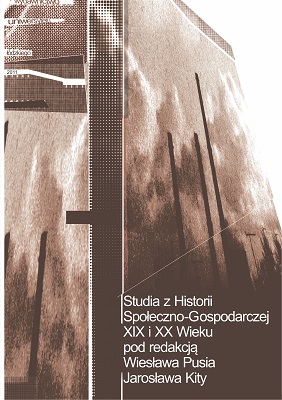Czasopisma lekarskie i higieniczne na ziemiach polskich na przełomie XIX i XX w. jako źródło do badań nad patologiami społecznymi (na przykładzie prostytucji)
DOI:
https://doi.org/10.18778/2080-8313.09.12Abstrakt
During the difficult epoch when there was no independent Polish state, the medical periodicals played an important role in the development of the medical disciplines. Doctors wrote about the problem of social pathology and the prostitution as early as in the half of the XIXth century when the topic was claimed to be immoral and it was tabooed by the public opinion. The intensification of interest took place after 1905. Medical journals (for instance, „Medicine”, „Health”, „Physicians’ Gazette”, „Physicians’ Survey”) became the place of discussion of the topic of various social pathologies. The doctors published also their articles in social journals. The doctors cooperated with the activists who fought with prostitution, venereal diseases and alcoholism (for instance, the publicists of „Purity”). Much attention was paid to the fact of negative consequences for health of the prostitutes (most of all their venereal diseases), moral and social aspects of their profession. The doctors tried to point to the reasons for prostitution and also the ways of limiting the pathology. One of the most important demands claimed by the doctors was sexual education of the young generation (K. Stróżewski, L. Wernic, Z. Srebrny). The issue of discussion and arguments was also the attitude towards the system of control of public prostitution. Many doctors thought it had been necessary to control the prostitution (L. Grabowski, F. Giedroyć). It was to be done by police and doctors although, at the same time, there were many advocates of abolitionism (L. Wernic, J. Budzińska-Tylicka). The visions of the doctors were connected with the hope of regaining independence. The intelligentsia tried to mark the elements of social policy which might be continued in a free country.
Pobrania
Opublikowane
Jak cytować
Numer
Dział
Licencja

Utwór dostępny jest na licencji Creative Commons Uznanie autorstwa – Użycie niekomercyjne – Bez utworów zależnych 4.0 Międzynarodowe.









